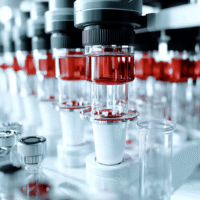Understanding the ECMO-CS Trial Results
The ECMO-CS trial looked at how effective a treatment called extracorporeal membrane oxygenation (ECMO) is for patients in cardiogenic shock. This condition happens when the heart can’t pump enough blood, leading to serious health problems. Here’s what the results mean for patients and clinics.
What Worked?
- Immediate ECMO Treatment: For patients with specific conditions (low cardiac index, high pCO2 gap, or low SvO2), starting ECMO right away showed a reduced risk of death.
- Better Outcomes: Those with low cardiac index had a significant drop in death risk (about half) when treated with ECMO.
What Didn’t Work?
- No Universal Benefit: ECMO did not show benefits for all patients with cardiogenic shock, especially those without the specific conditions mentioned.
How This Helps Patients and Clinics
These findings suggest that measuring cardiac index, pCO2 gap, and SvO2 can help doctors decide who might benefit from ECMO. This can lead to better treatment choices and improved chances for survival.
Real-World Opportunities
- Hospitals can implement routine checks for cardiac index, pCO2 gap, and SvO2 in patients with cardiogenic shock.
- Doctors can use these measurements to identify patients who may benefit from ECMO.
Measurable Outcomes to Track
- Rate of all-cause mortality in patients receiving ECMO.
- Changes in hemodynamic status (blood flow and pressure) after ECMO treatment.
Suggested AI Tools
- AI algorithms can help analyze patient data to predict who might benefit from ECMO based on the identified parameters.
- AI-driven decision support systems can assist doctors in making treatment choices quickly.
Step-by-Step Plan for Clinics
- Start Small: Begin by training staff to measure cardiac index, pCO2 gap, and SvO2 in patients with cardiogenic shock.
- Implement Protocols: Create clear protocols for assessing these parameters and deciding on ECMO treatment.
- Monitor Results: Track patient outcomes to see how these changes improve care.
- Expand Gradually: Use the data gathered to refine practices and expand ECMO use for more patients as needed.
For more details about the study, you can read the research here.





























